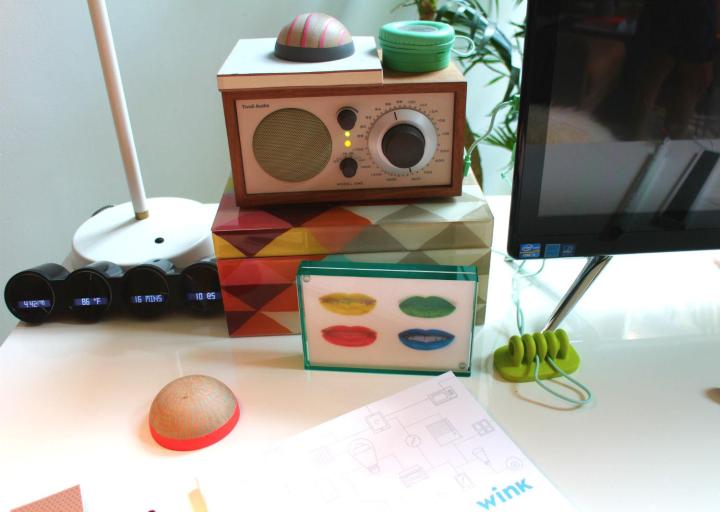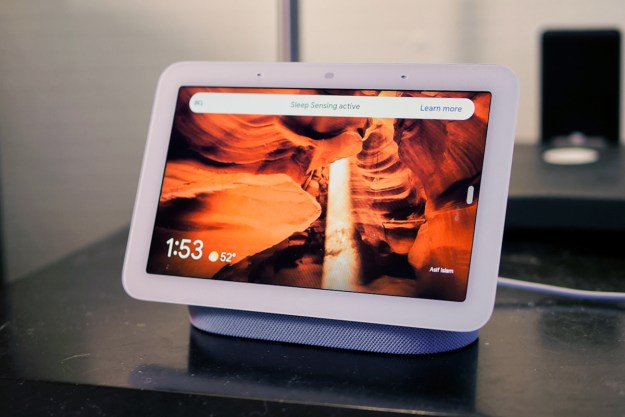
Quirky is out to change all that with Wink, its smart home app and hub combination, which will work with almost 60 different home-related gadgets when everything launches on July 7. The main goal is to make the smart home accessible to the average American and Wink aims to do just that through its partnership with the Home Depot.
Wink’s mission to make the smart home accessible to everyone is well on its way.
The Home Depot is synonymous with suburbia and good old American home owners. It has very little to do with the scenes of wealth and extravagance the words “Smart Home” usually conjure in the minds of the 99 percent. Even though most suburbians have never heard of Quirky –or Wink for that matter– they soon will. On July 7, Home Depot stores across America will introduce the Wink hub, app, and compatible gadgets in special displays at its many stores.

The Wink hub that connects all the different home gadgets to the app will cost $50 on its own, which is still cheaper than most other smart home hubs. However, to show Americans just how cheap the smart home can be, the retailer will offer a special promotion for would-be smart home aficianados. The hub will cost only $25 if you buy one other connected gadget, or better yet, just $0.99 if you buy two or more. Theoretically, you could buy two Wink app compatible $15 GE Link lightbulbs and get the hub for $0.99. Your grand total would be a whopping $31. Not too shabby for a smart home starter kit!
Not all of the smart gadgets are cheap, though. The GE oven, Bali blinds, Rheem water heater, and others surpass the $100 mark. Of course, these are rather big appliances, so that is to be expected. However, if you’re more interested in remote controlling your lights and turning your power strips off, Wink makes the smart home very affordable. Those with a little more money can easily add things like the Chamberlain MyQ garage door opener, Honeywell thermostat, Kidde smoke and CO alarm, Schlange Touchscreen deadbolt, and other cool smart home gadgets.

Several cool Quirky products, such as the Aros air conditioner, smart piggy bank, Nimbus notification dashboard, and its bendable power strips also work with the app. Of course, being Quirky gadgets, these smart products are on the affordable side.
All of these products are compatible with the Wink app via the hub. All you have to do to set up the hub, is connect it to your Wi-Fi network, download the app, and sync all the smart home gadgets to your Wink hub. To do this last step, you simply scan the products’ barcodes with the app. Once it find the product, Wink will connect the gadget to the app automatically. Then, you can control everything in your house remotely, so long as you have an Internet connection.
The app works on Android and iOS devices at the moment, but Wink says it will also support Android Wear, starting on July 7.

Luckily, the hub isn’t big or outlandish looking, but rather sleek, minimalist, and small, so it should blend into your home decor easily. All the other smart home gadgets that work with wink look quite nice, too, which is obviously important, given that you’ll be living with this technology every day.
Wink’s mission to make the smart home accessible to everyone is well on its way.
Quirky’s deliberately low prices and partnership with brick-and-mortar retailers like Home Depot are finally making home automation easy, accessible, and affordable for average consumers. Plus, the company’s focus on good design and style show that high-tech homes can still be beautiful and functional. However, Wink’s greatest achievement may in fact be its easy-to-use app, which makes it truly easy to operate and connect any home.
Editors' Recommendations
- Go smart or go home: Amazon’s Echo Show 8 smart display is $50 off
- Echo Hub vs. Echo Show 15: Which is the best smart home gadget?
- Echo Hub vs. Echo Show 8: Which is the best option for your smart home?
- Does Apple Home work on the Apple Vision Pro?
- How to turn your old phone into a security camera


